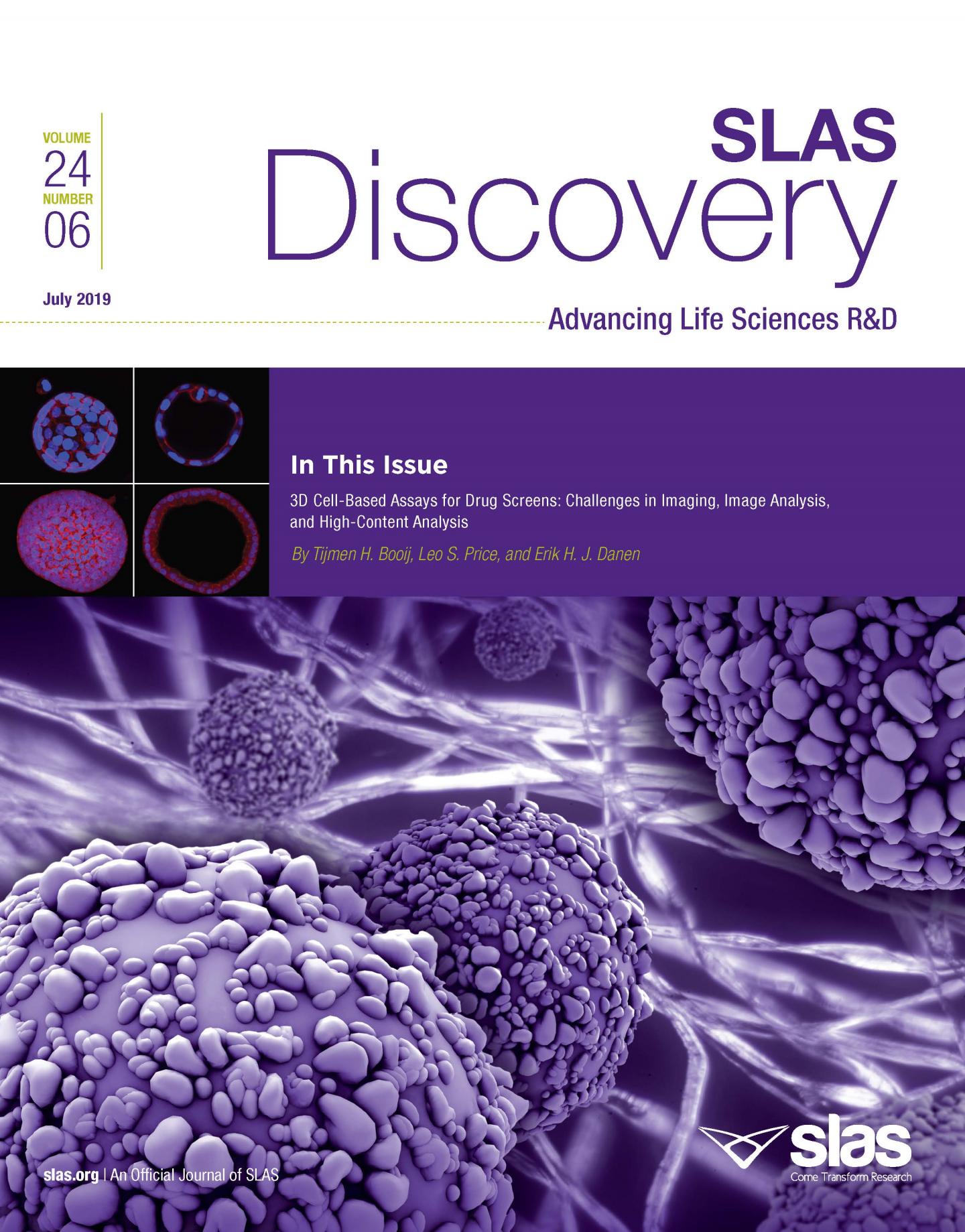
Credit: David James Group
Oak Brook, IL – In July’s SLAS Discovery feature article, “3D Cell-Based Assays for Drug Screens: Challenges in Imaging, Image Analysis, and High-Content Analysis,” Tijmen H. Booij, Ph.D., Screening Specialist for NEXUS Personalized Health Technologies (Switzerland), discusses the switch from using 2D to 3D cell cultures in drug discovery to more accurately mimic human physiological conditions and improve the success rates of drugs in the early stages of preclinical drug discovery.
In traditional target-based discovery, drugs are designed to focus on a single molecular target, whereas phenotypic drug discovery screens cellular systems. The latter strategy could be used as an alternative to pre-select drugs for the clinic, allowing for drug discovery at a target-agnostic level. This approach, however, is mainly used with 2D cell cultures that do not fully represent human physiology and historically has shown to prioritize the wrong drugs. To overcome this limitation, 3D cell cultures have been developed that may more accurately mimic physiological conditions.
In his review, Dr. Booij details the switch from 2D to 3D cell cultures and the challenges for high-throughput screening and high-content analysis. Using high-content analysis with 3D cell cultures in high-throughput screens has long been difficult due to technological limitations, and screens with 3D cell cultures have mostly used simple readouts that limit the amount of information that can be extracted. In addition, there is an enormous range in 3D cell culture techniques that has large consequences for the ease of collecting quality data.
The introduction of more relevant cell models in early preclinical drug discovery, combined with high-content imaging and automated analysis, is expected to increase the quality of compounds progressing to preclinical stages in the drug development pipeline. Overcoming these challenges will enable front-loading the drug discovery pipeline with better biology, extracting the most from that biology and improving translation between in vitro and in vivo models. This is expected to reduce the proportion of compounds that fail in vivo testing due to a lack of efficacy or to toxicity.
Access to July’s SLAS Discovery special issue is available at https:/
###
SLAS (Society for Laboratory Automation and Screening) is an international community of 19,000 professionals and students dedicated to life sciences discovery and technology. The SLAS mission is to bring together researchers in academia, industry and government to advance life sciences discovery and technology via education, knowledge exchange and global community building.
SLAS Discovery: 2017 Impact Factor 2.355. Editor-in-Chief Robert M. Campbell, Ph.D., Eli Lilly and Company, Indianapolis, IN (USA). SLAS Discovery (Advancing Life Sciences R&D) was previously published (1996-2016) as the Journal of Biomolecular Screening (JBS).
Media Contact
Jill Hronek
[email protected]
Original Source
https:/
Related Journal Article
http://dx.



